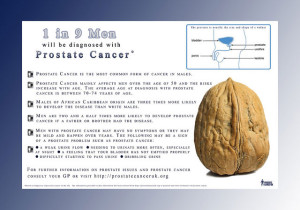 1 in 9 Men will have prostate cancer
1 in 9 Men will have prostate cancer
What are the prostate cancer treatment options available in the Philippines? Learn what they are and find out how they could have helped my father’s case if they were given earlier.
Despite the advancement in prostate cancer treatment options, my father was still defeated by prostatic cancer. He was laid to rest almost a month ago.
It was a long battle for him. Although we didn’t want him to go, we have to let him leave as we saw him suffered extremely.
It was in 2006 when he was diagnosed with stage one prostatic cancer. His doctor advised him to have a monthly hormonal treatment that would be injected subcutaneously. He did comply. After two sessions, he quit.
My father wasn’t a kind of person who’d undergo medical examination. But he was forced to do so when he already experienced some of the symptoms of an enlarged prostate.
- Dribbling after urinating
- Urge to urinate again right after urinating
- Frequent urination
- Nocturia
Tests that detect prostatic cancer
1. PSA (Prostate Specific Antigen)
Healthy men have less than four nanograms per milliliter of blood. For patients with prostatic cancer, their PSA level goes up. My father’s PSA level at that time was greater than 100.
Hence, he was advised to undergo TURP.
But, just because your PSA levels are high, doesn’t mean you have cancer. There are various factors that affect those levels, like older age, prostatitis, medicines, etc.
2. Digital Rectal Exam (DRE)
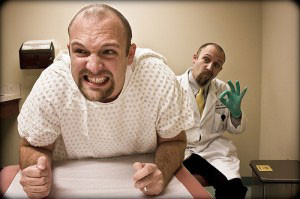
This was done during my father’s first day of visit to a urologist.
In this exam, his doctor inserted his gloved finger into his rectum to feel hard areas on his prostate. Since his doctor felt something hard during that examination, he recommended a TURP to obtain specimen for biopsy.
DRE isn’t painful. That’s according to my father who also had hemorrhoids.
But this examination isn’t as effective as PSA blood test in detecting prostate cancer. However, doctors still use this to find cancers in men who have normal PSA levels but experiencing symptoms of enlarged prostate.
Prostate cancer treatment options
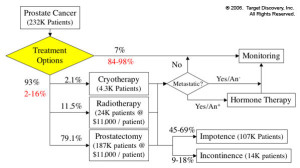
Anti-androgens
In addition to TURP, the other treatment option recommended at that time by my father’s doctor was hormonal therapy that involved injection of anti-androgens, which could block the functions and actions of androgens.
But he only had two sessions. He opted to discontinue because of the cost.
What he did?
He chose to take herbs.
We counseled him not to halt his hormonal therapy. He could still take herbal remedies for the prostate but he shouldn’t end the therapy.
Unfortunately, he was adamant.
Instead of listening to us, he chose to drink those herbs provided by some people who took advantage of his case.
He didn’t heed to our advice and his doctor’s recommendations.
For years, he didn’t have treatment for his prostate cancer.
He was fine, until he experienced again the symptoms of having such cancer. So, he underwent another TURP, which was conducted by his new urologist.
CT scan was also performed. This time, the cancer cells had multiplied to some parts of his bones.
This was what we feared. When bones would be affected, it’d be too painful for the patient to endure.
But that didn’t scare my father. Probably, he didn’t understand. Or he was still in denial.
He continued to be obstinate. Since he didn’t experience symptoms of his bones being affected, he maintained taking herbs while ignoring the medicine prescribed by his new urologist. The medicine was quite cheaper than the first hormonal therapy recommended by his first doctor.
Orchiectomy
His new doctor also recommended for him to undergo orchiectomy. It’s a surgical procedure that involves removal of testicles, which are the main sources of testosterone and other male hormones that are considered to be the food of prostate cancer cells.
We convinced him to undergo such operation. But he only obliged when it was already too late, i.e. the cancer cells propagated to more areas of his body.
We also wanted him to submit himself for radical prostatectomy. But, according to his urologist, this treatment was of no use to him because the cancer cells had spread enormously.
Radiation therapy
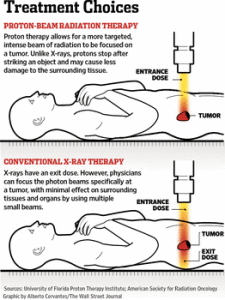
It’s being used to kill the cancer cells and prevent them from growing. This type of therapy is ultraexpensive, at least for people like us. Each session will cost around PHP5,000.
My father had no choice but to undergo such therapy in 2013 because he could no longer feel his lower extremities.
A few years after undergoing orchiectomy, my father experienced a pain in his spinal cord that forced him to finally take bicalutamide and a pain reliever (not morphine yet).
The meds alleviated the pain temporarily.
The pain was also the reason he was being conscientious to his medications. But it was already too late.
Sometime in April of 2013, he felt weakness in his lower extremities. He was brought to the hospital. That weakness led to numbness and paralysis.
To know what caused the paralysis, he underwent MRI.
The result jolted us: prostate cancer cells accumulated in certain part of his spinal cord that caused his paralysis in his lower extremities.
Hence, radiation therapy has to be conducted ASAP. This lasted for about a week.
During this therapy, the high energy tackled one area of his body so he didn’t experience adverse negative effects.
But it took a few weeks before he could feel and move his legs again.
Through several physical therapy sessions, he was able to stand and walk again with the help of a walker.
Some of the herbs that came straight from China were also given to him.
Niteworks of Herbalife was provided as well. I could say that these herbal remedies did help in improving his condition, temporarily.
Then, in 2014, almost a year after his first radiation therapy, he felt another throbbing pain in his spinal cord.
That prompted us to drive him to the hospital. His neurologist recommended another radiation therapy session.
This time, the therapy needed to focus on two areas. Higher doses were selected to speed up the therapy sessions.
But it was a ginormous mistake.
It made my father to be extremely weak.
A few weeks after he completed the therapy, he started to lose his appetite. The medicine to boost his appetite didn’t work. This is usually seen when the person is nearing the end of life.
Depression
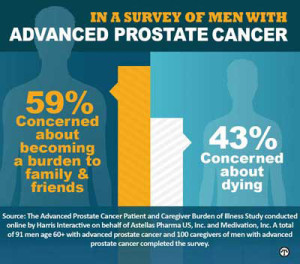
He became depressed, although it was normal to feel that way considering his medical condition.
My father wasn’t known for being a cry baby. But he did cry each day. Each time someone he knew visited him, he wept.
And that expensive medicine
His PSA wasn’t improving, despite the daily intake of bicalutamide.
Thus, his oncologist prescribed him with another hormone therapy, i.e. abiraterone. It was an oral medicine given to patients with advanced prostate cancer.
What this drug does is that it blocks a certain enzyme that assists cells in the body in making male hormones. Remember that prostate cancer cells rely on androgens in growing and spreading.
This drug was ordered because my father wasn’t a good candidate for chemotherapy. Since bicalutamide was no longer working as seen on his PSA result, his medicine must be changed.
But this drug would only prevent the cancer from further spreading, as told by his oncologist. This means that those cells that multiplied on various parts of this body could no longer be eliminated.
Then, there’s the cost — PHP100,000.
Extreme Pain
During his last few months, he complained of extreme pain of some parts of his body. This was what his first urologist told him about: “Would you wait for that time to come when you’d experience extreme pain before you’d submit for treatment?”
There were times when he’d ask us to kill him because of the pain. He’d shout in the middle of the night because it.
Morphine was only prescribed when he began to show signs of “confusion” and “disorientation.” This time, he couldn’t talk with sense.
He started to lose interest of his surroundings, which was a part of the dying process.
Seizure
It started a few days after we’d celebrated New Year.
The twitch started in his right hand. Then, it progressed to his face and affected his left hand. He was brought to the ICU only after injecting him with diazepam. (Those damn nurses didn’t act swiftly to call a doctor. They thought that it was just an insignificant twitching brought by “cold” temperature. And they planned on working abroad???Sheesh!)
Each day leading to his death, my father experienced seizure that usually started in his right hand and lasted a few minutes. Sometimes, it’d only last a few seconds.
The cause of his seizure wasn’t clear yet. But his neurologist said that the brain mets were the culprits. However, some people we knew who worked in the medical field said that it could have been caused by the antibiotics given to him.
Hours before his death, he had seizures that affected his entire body. His body was already rejecting the medicines for such purpose.
Other prostate cancer treatment options
Apart from those treatments mentioned above, there are other options that a prostate cancer patient can use. But these weren’t ideal for my father’s case.
Prostatectomy
It’s a surgical approach that involves the removal of either all or some parts of the prostate. But this is only done when the disease is confined to the prostate.
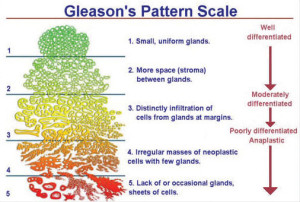
Since it’s a delicate work, it must only be done by an experienced surgeon. A good surgeon and the best surgeon are two different people and the difference can surely affect the outcomes.
Chemotherapy
It’s given to stop the cells from growing and spreading. Before, this prostate cancer treatment option was only used to relieve symptoms of metastatic cancer. These days, it’s being used to prolong the life of the patients who longer respond to hormone therapy.
Cryotherapy
It’s a rarely used treatment option for prostate cancer. What this option does is that it freezes the prostate cells to death. But the success rate of this option is better for well-confined disease than those with metastatic cancer.
In addition to these prostate cancer treatment options, there are other ways to kill the cancer cells. It’s best to work with your doctor to find the right option for your case.
Wrapping up
Prostate cancer is an easy-to-treat disease, as long as it’s caught early. When the disease hasn’t spread yet to other parts of the body, the patient has a better chance to have successful treatment and live for long time.
Unfortunately, there’s no one size fits all when it comes to treatment options. You should work with your doctor to make the right decision as to which is best for you. What your decision now will reverberate for a long time.
You should work not only with a urologist but also with an oncologist so a comprehensive assessment will be given.
According to my father’s oncologist, prostate cancer progresses slowly. However, when it attacks, it’s going to be deadly. It’ll destroy your body, until you surrender and die.
During his last few months, my father did regret of not undergoing treatment when his body could still fight and eliminate the cancer cells. If only… he would still be alive. But what’s done is done. He’s gone and will never come back.
It’s difficult to lose a father. My deepest sympathy.